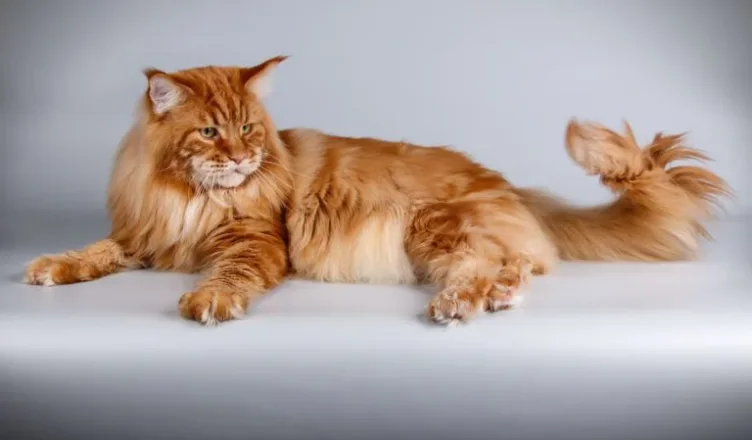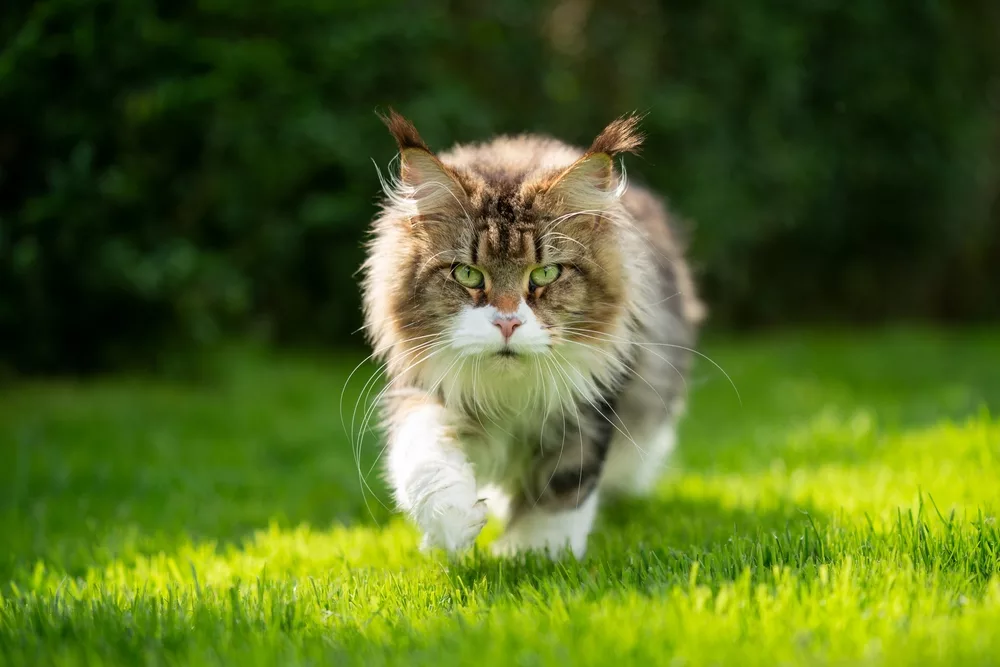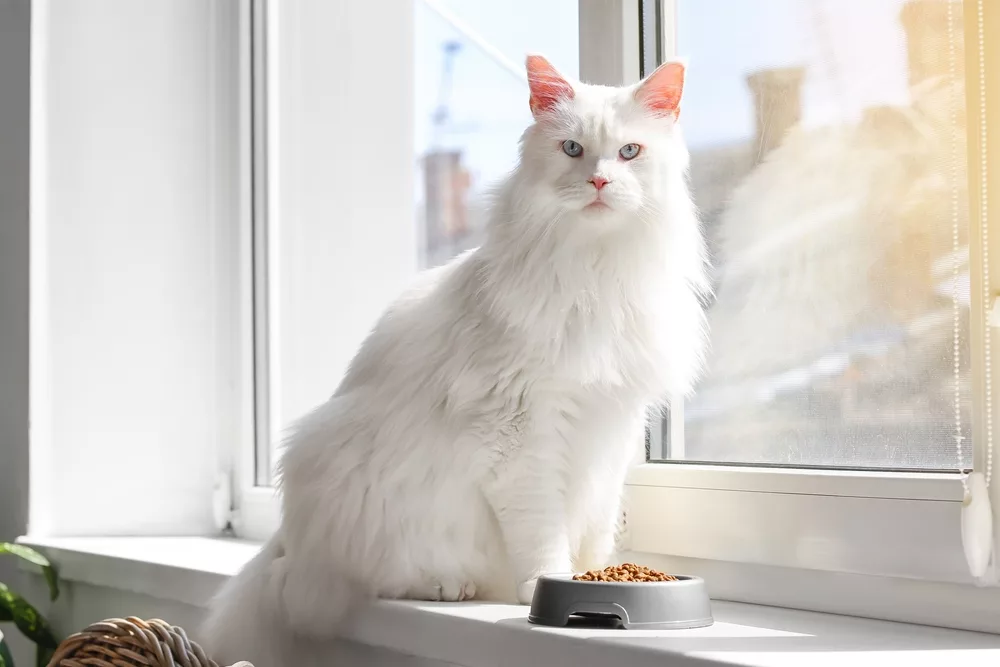First of all, the FIFe well-known Maine Coon is a breed of cat identified by using the Fédération Internationale Féline (FIFe). Particularly, FIFe outlines the features and characteristics that a Maine Coon have to possess as a way to be considered “show pleasant”.
Essentially, the FIFe preferred for Maine Coons is a hard and fast of pointers used by FIFe judges to evaluate the breed.
Furthermore, the FIFe standard covers the breed’s head shape, body shape, coat shade, coat texture, eye color, kind of ears, tail period, and lots greater.
Earlier than diving deep into the FIFe standard Maine Coon, permit’s take a second to discuss what FIFe is, its records, and activities.
FIFe World Show 2022
Federation Internationale Feline, the United Nations of Cat Federations
Founded in 1949, the Federation Internationale Feline (FIFe) is a non-profit international cat registry and fancy cat organization. It can be considered the United Nations of Cat Federations.
FIFe promotes the breeding and exhibition of cats and ensures the welfare and protection of cats worldwide. The FIFe comprises 41 members from 39 countries and presently has one aspiring member under patronage.
FIFE’s primary activities include:
- The registration of cats.
- The organization of cat shows.
- The promotion of responsible cat ownership.
- The promotion of cat care and breeding standards.
The organization provides registration and registry services, publishes breed standards, and promotes responsible pet ownership and breed standards. FIFE also provides financial assistance to cat owners, shelters, and breeders, as well as education and training programs.
Brief History of FIFe
FIFe is the brainchild of a French cat lover Madame Marguérite (Miggy) Ravel. She dreamed of an international European cat federation. In 1949, her dream was realized when the Royal Cat Society of Flanders, the French Cat Federation, and the Italian Cat Society met in Paris, marking the unofficial founding of the Fédération Internationale Féline d’Europe (FIFE).
At the first FIFe show, which took place in Paris in 1949, a total of 200 cats were present, with exhibitors from France, Italy, Switzerland, Belgium, and the Netherlands. Today, such a show would be considered small, as FIFe World Shows typically have more than 1500 entries with exhibitors worldwide.
At the 1972 General Assembly, the Fédération Européenne Féline (FIFE) accepted the Brazilian Clube Brasileiro do Gato, resulting in the expansion of the federation beyond Europe.
In response, the name was changed to Fédération Internationale Féline (FIFe) the following year. FIFe ensures that its national members maintain individual identities while also adhering to the same standards for cat registrations, shows, judges, and judge training.
It divides the cat breeds into four categories:
- Longhair
- Semi longhair
- Shorthair
- Siamese & Asian
FIFe registered cat breeds
It currently fully recognizes the following cat breeds that fall in the above four categories:
|
1 |
Abyssinian | 17 | European |
| 2 | American Curl Longhair | 18 | German Rex |
| 3 | American Curl Shorthair | 19 | Japanese Bobtail Shorthair |
| 4 | Balinese | 20 | Korat |
| 5 | Bengal | 21 | Kurilean Bobtail Longhair |
| 6 | Birman | 22 | Kurilean Bobtail Shorthair |
| 7 | British Longhair | 23 | LaPerm Longhair |
| 8 | British Shorthair | 24 | LaPerm Shorthair |
| 9 | Burmese | 25 | Maine Coon |
| 10 | Burmila | 26 | Manx |
| 11 | Chartreux | 27 | Neva Masquerade |
| 12 | Cornish Rex | 28 | Norwegian Forest Cat |
| 13 | Cymric | 29 | Ocicat |
| 14 | Devon | 30 | Oriental Longhair |
| 15 | Don Sphynx | 31 | Oriental Shorthair |
| 16 | Egyptian Mau | 32 | Peterbald |
FIFe recognizes four other Preliminary breeds and varieties of cats. Namely include Bombay, Lykoi, House Cat Longhair, and House Cat Shorthair. Explanation of all the FIFe-recognized cat breeds is not possible in one article, so we’ll discuss Maine Coon only.
Maine Coon Breed Standards History
The Maine Coon was officially recognized as a breed in the 1960s and 1970s by all relevant associations that issue pedigrees. The Maine Coon Breeders and Fanciers Association (MCBFA) wrote the original breed standard prior to this recognition, which served as the basis of the eventual official standard.
During the period from 1969 to 1979, the Maine Coon gained popularity as a recognized pedigree cat in the United States. The FIFe eventually determined that the time had come to acknowledge the Maine Coon as an official breed, and thus compiled a standard for the same.
In 1983, FIFe established the “13MC” standard for the recognition of the breed, which remained valid until 1992 when it was superseded by a new version. A select group of breeders revised the “13MC” standard a few years later and adapted it to align with the format of other revised standards. As a result, it is now known as the “FIFe Standard Maine Coon”.
FIFe Standard Maine Coon
The FIFe Maine Coon Standard has been in effect since 1992 and states:
“The Maine Coon is a natural breed of amiable character that traces its origin to the working cat found on the farms of Northeast America.”
General
Appearance: The breed of the Maine Coon is large framed with a square outline of the head, large ears, broad chest, solid bone structure, a long, hard muscled, rectangular body and a long flowing tail. Good muscle tone and density give the cat the appearance of power and robustness.
Size: Large
Head
Shape: Medium in size; square outline. Profile with a gentle concave slope.
Forehead: Gently curved
Cheeks: Cheekbones high and prominent
Face/Nose/Muzzle: Face and nose of medium length with a square outline of the muzzle. Distinct transition can be felt between muzzle and cheekbones.
Chin: Firm, in vertical alignment with nose and upper lip.
Ears
Shape: Large, wide at the base. Moderately pointed. Lynx-tufts are desirable. Tufts of hair in the ears extend beyond outer edges of ears.
Placement: Set high on head with a very slight outward tilt. Ears should be placed one ear’s width apart. The width extends slightly in older cats. Lower base set just slightly further back than upper base.
Eyes
Shape: Large and widely set. Slightly oval, but not almond shaped, appear round when wide open. Set slightly slanted towards the outer base of the ear.
Color: All eye colors, except blue are permitted in any coat color. Clear eye color is desirable.
Neck
Males have a very strong muscled neck.
Body
Structure: The body should be long, substantial bone structure. Hard muscled, powerful, broad-chested. Large framed, all parts of the body in proportion to create a rectangular appearance.
Legs
Substantial, medium length to form a rectangle with the body.
Paws: Large, round and well tufted between the toes.
Tail
At least as long as the body from shoulder blade to base of tail. Wide at the base tapering to the tip; with full, flowing hair. The hair on the tail is long and always remains flowing.
Coat
Structure: All weather coat. Dense. Short on head, shoulders and legs, becoming gradually longer down the back and sides, with long, full shaggy baggy trousers on the hind legs and belly fur. A frill is expected. Texture silky. Coat has distinct body, falling smoothly. The undercoat is soft and fine, covered by the coarse smooth outercoat.
Color: All colour varieties are permitted, including all colour varieties with white; except pointed patterns and chocolate and lilac, cinnamon and fawn. Any amount of white is allowed, i.e. a white blaze, white locket, white chest, white on the belly, white on the paws, etc.
Condition
The Maine Coon should always be in good balance, condition and proportion.
Remarks
- Type must always take preference over color
- very slow maturing of the breed should be taken into account
- mature males may have larger and broader heads than females
- females are proportionally smaller than males. Allowance must be made for this significant difference in size.
- the length of coat and density of undercoat vary with the seasons.
Faults
- General: unbalanced proportions and overall small cats
- Head: Round head, straight or convex profile
- Nose: Nose break
- Muzzle: pronounced whisker pads, rounded or pointed muzzle
- Chin: Undershot chin
- Ears: Wide-set, flared ears
- Eyes: slanted almond-shaped eyes
- Body: Fine, light bone structure. Short cobby body.
- Legs: Long stilty legs
- Tail: Short tail.
- Coat: Lack of belly shag, coat of overall even length, lack of any undercoat.


